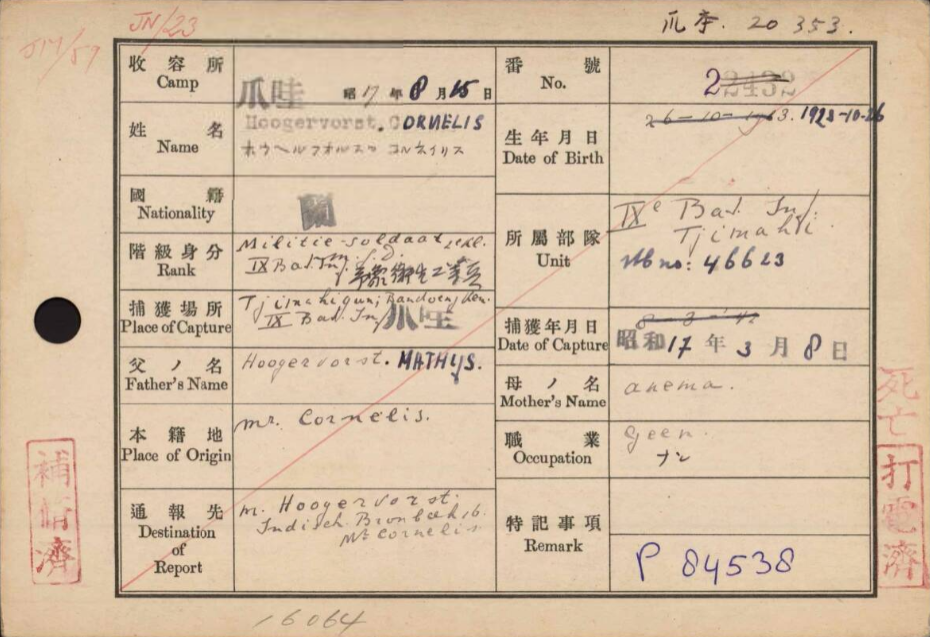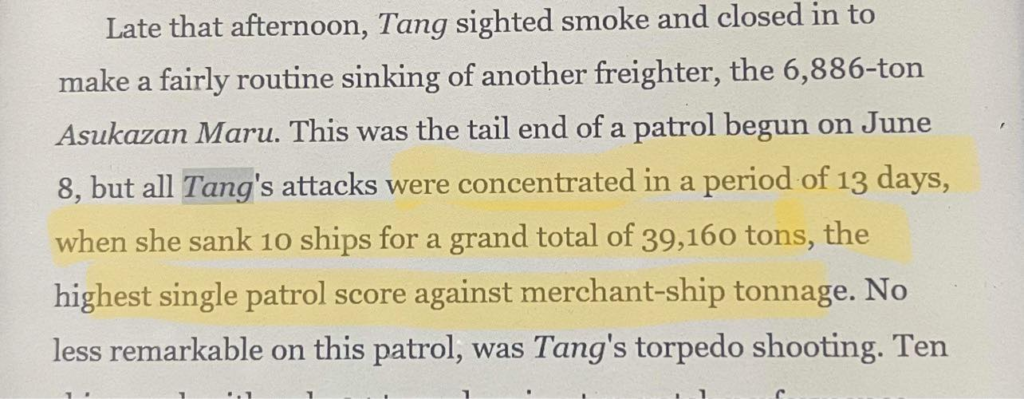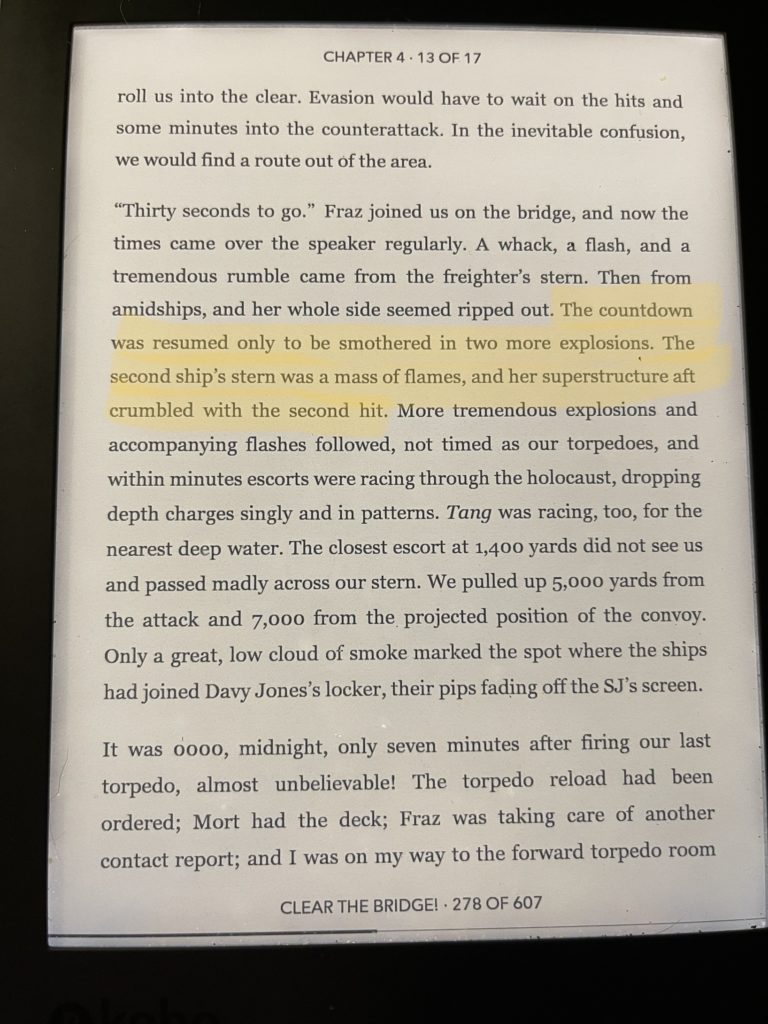I recently read the book “Sink ‘Em All’, written by Vice Admiral Lockwood (Amazon link). It tells the story of the American submarine warfare in WW2 – strategy, wins and losses. The book tells the story of many of the more famous submarines, including the USS Wahoo and USS Tang. However, as many typical American historical books it tells the story of the war from a US perspective and leaves out some of the personal and tragic stories.
I may have mentioned before that my family got captured by the Japanese during their invasion of the former Dutch East-Indies. My grandfather (a naval officer) barely survived the POW camps in Burma and several of his family members perished under Japanese occupation. I’ll go deeper into that at a later stage (time permitted)
One of the family members captured was a cousin of my dad, Cornelius Hoogervorst (POW card), who served as KNIL soldier during the Japanese invasion – he was captured on March 8th of 1942, then for a year managed to survive in a POW camp in Central Java (“camp 20353”).

In the early Summer of 1944, POWs of that camp were shipped out to Japan (via Singapore) – by the time their ship (the Tamahoka Maru) almost reached its destination (Nagasaki), it got torpedoed by the USS Tang. Only 200 or so POW survived – the majority of POWs died as the “ship sunk in less than 2 minutes” – including my dad’s cousin, Cornelis. The survivor report details of horrifying conditions on the ship during and after the torpedo attack:
At 11:50 pm on 24th June 1944, in approximate position 40 miles S.W. of Nagasaki, we were awoken by an explosion as another ship in the convoy was torpedoed and within seconds another torpedo hit our ship just forward of the bridge on the starboard side, blowing the covers off the hatches. This explosion must have killed many men sleeping on them and numbers of others on deck are known to have been struck by falling debris. Also there were now two large holes in the deck of the hold and many men, rushing for the ladders which had been blown away, must have fallen into the cargo. Other men rushed toward the life belts and were so trapped.
Lt. John Hickley, RN, Senior surviving English Officer
I went back to the book ‘Sink ‘Em All’ to find any quotes on that infamous attack on the Japanese convoy:

There’s no mention of the attack except for the fact that USS Tang scored the “highest single patrol score in the period of 13 days in June” – which also covers that tragic June 24th of 1944.
Did USS submarine commanders know that they had hit POW ships? Possibly not. However, as ‘Sink Em All’ describes – most of the statistics the US Navy gathered and collected came from Japanese sources – and some of these Japanese reports were very specific suggesting that some of their ships carried POWs. According to historians, only late 1944, the Americans became aware of the practice of shipping POWs to Japan and the conditions Allied military personnel suffered in POW camps:
but the sinking of the Kachidoki Maru and the Rakuyo Maru on 12 September led to the first eyewitness accounts being given by former POWs to Allied administrations about conditions in camps on the Thailand-Burma railway, whilst the sinking of the Junyo Maru on 18 September was one of the deadliest maritime disasters of the Second World War. The two sinkings, only six days apart, resulted in the deaths of over 7,000 men.
Above link also shows photos of POWs picked up by the USS Pampatino. Highly recommended read.
Update: From the book “Clear the bridge!’ by Richard Kane, cmdr of the USS Tang:

